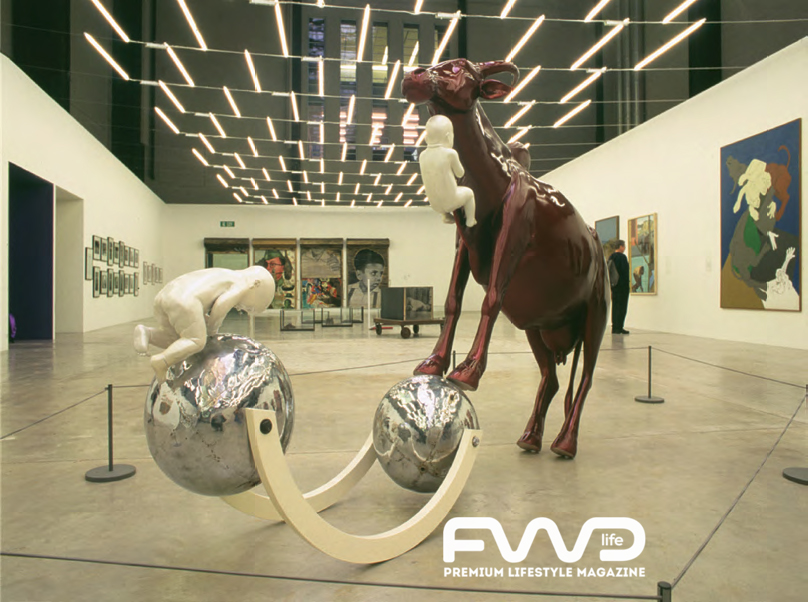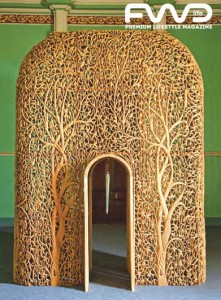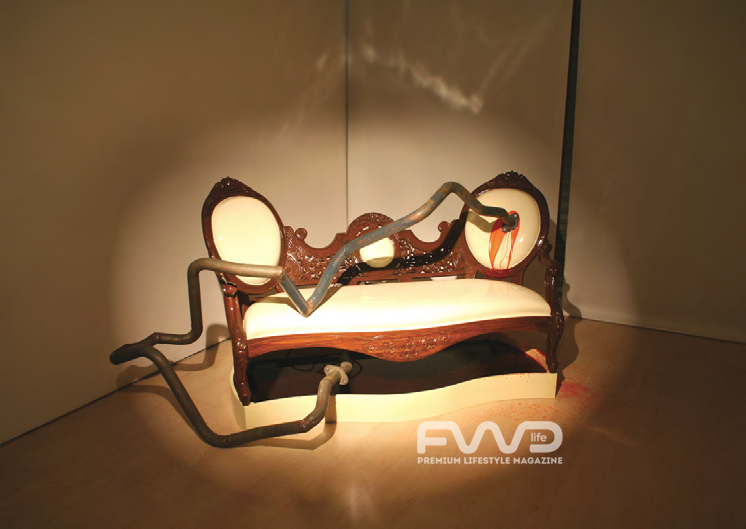Text: FWD Media Photos: Various Sources
Sudarshan Shetty, the frontman of KMB 2016, talks to FWD about art, himself and the plans for the Biennale.
As an artist, one is occupied with his work, while being a curator is a different game. Or is it the best of both?
So what’s it like being in the shoes of a curator?
I am working out the transition in my head now. As a curator, I have to extend beyond my practice and look beyond. It would be a large process, starting with arranging the basic logistics, working with a team and seeking people’s inputs. A lot of propositions and counter-propositions will be made, and I believe it will be a very energetic confluence. I’m hoping to reach there soon so that we have enough time to work on executing the ideas. The Biennale, for me, is a real proposition to extend beyond my practice as I am out there constantly. It could help me change the way I look at my own work and may also help in evolving it. Nonetheless, it’s going to be an intense experience working with other artists, getting into their studios, into their personal spaces and also into their heads. 
Your artwork was displayed in Biennale 2012; so this in some sense is a revisit. How do you look at it? On A Different Mission.What is your take on the Kochi Muziris Biennale?
I think the KMB has managed to create a unique personality for itself within the short period of its existence. The original vision of Bose (Krishnamachari) and Riyaz (Komu) about reaching out and taking it to the people is etched into it. The location of Kochi also makes it special. The Biennale is almost a continuation of the cross-cultural history of Kochi as it includes world views from elsewhere. I think this is a logical continuation of a history of the place.
Could you talk about your art, your life and the ideas that helped you form your thought processes?
I lived in Bombay most of my life and went to the JJ school of art in the eighties. At JJ, I realized that art was not what I thought it was. I found that it was not totally about skill. I found
out that even to attain skill, there had to be some content. This led me into doing a lot of sculptural work though I was never trained as a sculptor. I spent a lot of time working with many established sculptors and learned a lot being with them. I started with mundane objects and started juxtaposing to create unlikely forms. I started looking at what happened with these juxtapositions and why the juxtaposition was necessary? In some sense, I have been questioning the idea of what it means to be an artist. That is the seed of what I am doing right now.
What are the kind of works that have influenced and inspired you?
I have always been inspired and influenced by the kind of Kabir and so. Dohas, for instance, demonstrates an image and a counter- image creating a vast speculative space in between. Take the doha, “Lagan binajaagenanirmohi” for instance, it says that without intense devotion, one cannot be detached. Such imagery that is essentially Indian(for the want of a better word) fascinates me. This notion of ideas that are contradictory, yet not mutually exclusive is what I try to replicate in my work.
With the Biennale, Indian art and artists get larger market spaces. Do you think this plays a role in art and artists?
Yes, it surely plays a role, but a limited one. It is the artist who decides the extent he would want the market to infiltrate into his art. There are artists to whom fame and money have done the world of bad, and there are others who have flowered with fame. We were lucky when we were younger, to be in a space where there were no market expectations. It gave us freedom from the responsibility of making money. We were luckily stupid enough to have joy and pride in being an artist and believing that we were outside the system.

Do you see a similar sense of adventure in Indian artists these days?
It is a prerequisite for an artist to challenge oneself and be challenged or else he’ll lose the urge to create art. But, I don’t think all artists do that.
Have you worked with the artists in Kerala? Are you looking forward to being in Kerala?
I see this as an opportunity to look at Kerala, understand the art and films here. As students at J.J, there was a time when we looked up to Aravindan, John Abraham, and Adoor. The Stories of Film club movement in Kerala floated its way to Bombay, and we had people replicating it. So yes, I am really looking forward to seeing the various sides of Kerala.